Since Zucchinis are versatile and easy to grow, they have been popular in most house gardens. For abundant growth of delicious and nutritious Zucchinis, you must plant them in the correct soil type.
Zucchinis love soil that drains the excess water and retains moisture to stay hydrated and consistently moist. The best soil type is loamy soil which has a perfect blend of clay, sand, and organic matter. Also, it should have a pH of 6.5 to 7.0.
Different gardens have different types and textures of soil, and you have to make proper amendments for zucchinis. In this article, we will look at some factors to consider while selecting the soil and some ideal soil mixes for a perfect blend.
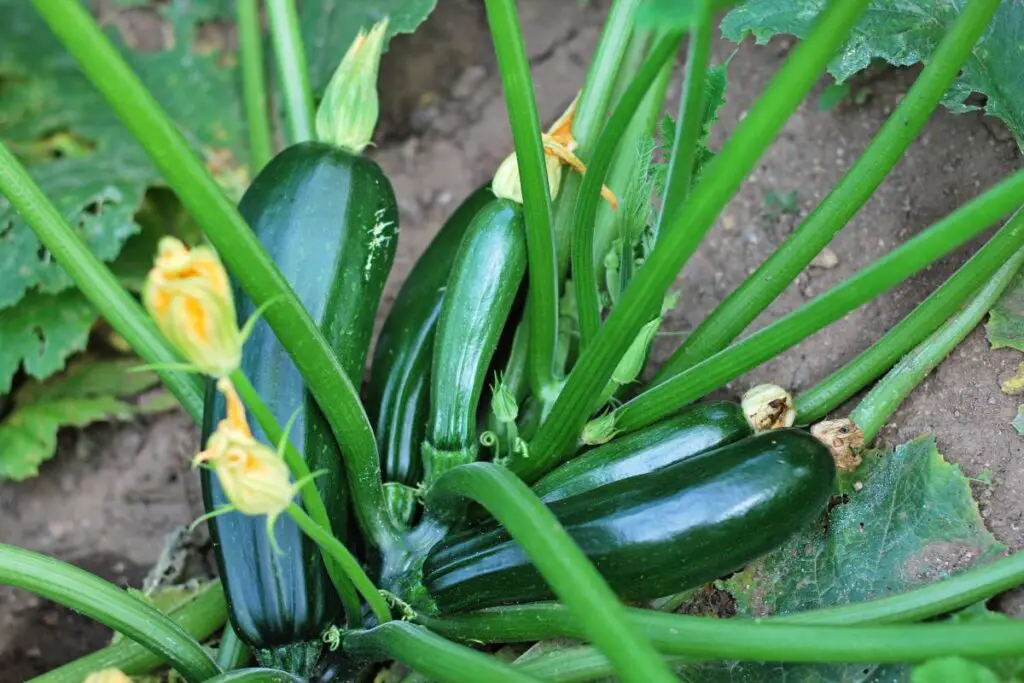
Understanding the Importance of Soil for Zucchini Plants
Like sunlight and water, soil is also essential for healthy Zucchini growth.
The correct soil composition gives the plant the necessary nutrients, proper drainage and retention, and a perfect environment for overall growth and root development.
I have recently started growing many vegetable plants in my garden, and Zucchinis are one of them.
For the soil, I always use organic compost mixed with the garden soil.
At times, if the soil deteriorates, I add more organic compost.
Compost works like magic.
Till now, my Zucchinis are thriving.
With the right soil type and other requirements, Zucchinis will thrive throughout their growing season.
Here are some areas where soil plays a vital role in the growth and development of Zucchini plants:
- Not only fertilization but soil also provides adequate nutrients to the plant. Soil delivers nitrogen, phosphorus, potassium, and other minor nutrients, which help the plant’s growth.
- The right soil type helps drain the excess water and retain the required moisture. This prevents overwatering and encourages healthy and hydrated plants.
- The right type of soil will allow the roots to receive an adequate amount of oxygen. It results in good root health and nutrient uptake, which is needed for the plant’s vigorous growth.
- A perfect soil blend will improve aeration and air circulation, reducing the chances of diseases, especially soil-borne diseases.
- Since the plant and the root system stays healthy, the plant will be able to produce an abundant amount of yields.
If the garden soil is imperfect, add ingredients and amend it to make it perfect for Zucchinis.
Please keep reading to learn how to make soil ideal for them.
Nutrient Requirements of Zucchini Plants
The soil you use for the Zucchini plants should have enough nutrients for a healthy and strong plant that can produce abundant fruits.
Zucchinis require a balanced mix of nutrients to grow healthy and produce good quality and fresh fruits.
The three primary nutrients are nitrogen, phosphorus, and potassium.
Nitrogen helps in the vegetative growth.
Potassium and phosphorus encourage root development and fruit production.
The soil should contain a balanced mix of these three nutrients.
Make sure the content of nitrogen is higher in the early growth stages.
When the plant is about to produce flowers and fruits, phosphorus and potassium content should be higher than nitrogen.
Supplementing your soil with good organic compost or fertilizers like bone meal or fish emulsion is best.
Add these with 50% of your garden soil to make a perfect nutrient diet for Zucchinis.
Optimal Soil pH for Healthy Zucchini Growth
The next important factor to consider while deciding on the ideal soil type of the pH level.
The ideal pH level of the soil for zucchini plants ranges between 6.5 and 7.0, which is slightly acidic to neutral.
A soil with too much acidic or alkaline will affect the nutrient balance and plant growth.
You can test the pH level with a testing kit and adjust the pH accordingly.
Add lime or wood ash if the soil’s pH is too low. If the pH is higher, add sulfur or gypsum.
What is the Preferred Soil Texture for Zucchini Plants?
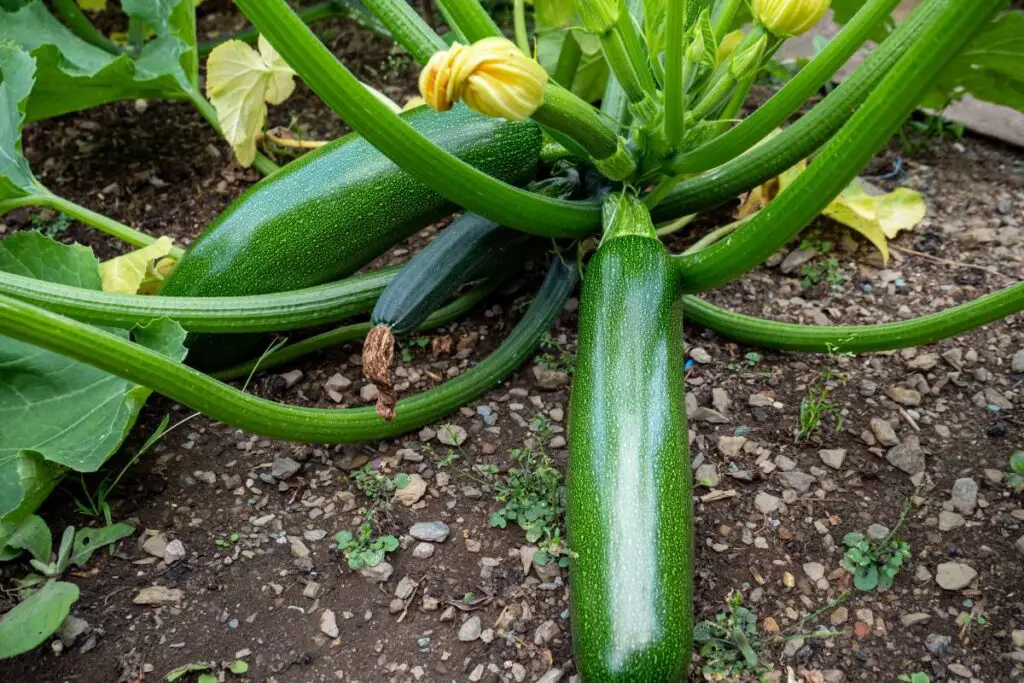
The texture is equally important, like the pH and nutrition levels.
Soil texture plays an essential role in the plant’s growth and development.
When we speak of soil texture, it indicates the relative proportions of the materials you use to make soil, for example, garden soil, clay, sand, silt, compost, etc.
The soil texture should be balanced and loamy.
Loamy soil is good for drainage and retention.
It provides a perfect texture to the soil, thus making it ideal for the roots to breathe and spread without any obstructions.
The soil should neither be too compact nor too runny.
If the garden soil is not loamy, add organic matter like compost or well-rotted manure to improve the texture.
Organic or Inorganic: Right Soil Amendments for Zucchini Plants
Both organic and inorganic soils are suitable for Zucchini plants.
But it is the type and texture of soil you need to check before using.
Organic soil is mainly made of decomposed matter.
This soil is ideal because it will make the soil nutritious and healthy.
The organic compost works as a slow-release fertilizer for your plant and improves its growth.
Organic soil also improves aeration, which further allows the roots to breathe. It also improves drainage and retention.
Organic soil will retain the required moisture and drain the excess.
This is what Zucchinis and most of the other plants need for healthy growth and development.
You can make organic soil at home or buy it from nursery stores.
On the contrary, inorganic soil is a mixture of 2-3 materials, and they do not contain any organic matter or compost.
This soil type is often used in container plants to improve aeration and drainage.
Both soil types are ideal for the Zucchini plants.
If you are growing them in the garden, go for organic soil.
And for containers, you can choose both types based on your preference.
However, organic is considered the best one for Zucchini plants.
Some organic soil for Zucchinis:
- PRO-MIX Premium Organic Vegetable & Herb Mix (2 cu. ft.) Promix Soil
- Fox Farm Happy Frog Organic Potting Soil Mix Indoor Outdoor Garden Plants, 51.4 Quartz (2 cu ft) (Bundled with Pearsons Protective Gloves)
- Espoma Company (VFGS1) Organic Vegetable and Flower Soil (Two Pack)
- Sun-Gro SUGRBG2 13020402 Black Gold Natural and Organic Soil, 2 Cubic Feet, Brown.
- Miracle-Gro Expand ‘n Gro Concentrated Planting Mix 0.67CF.
What is the Ideal Soil Composition for Zucchini Plants?
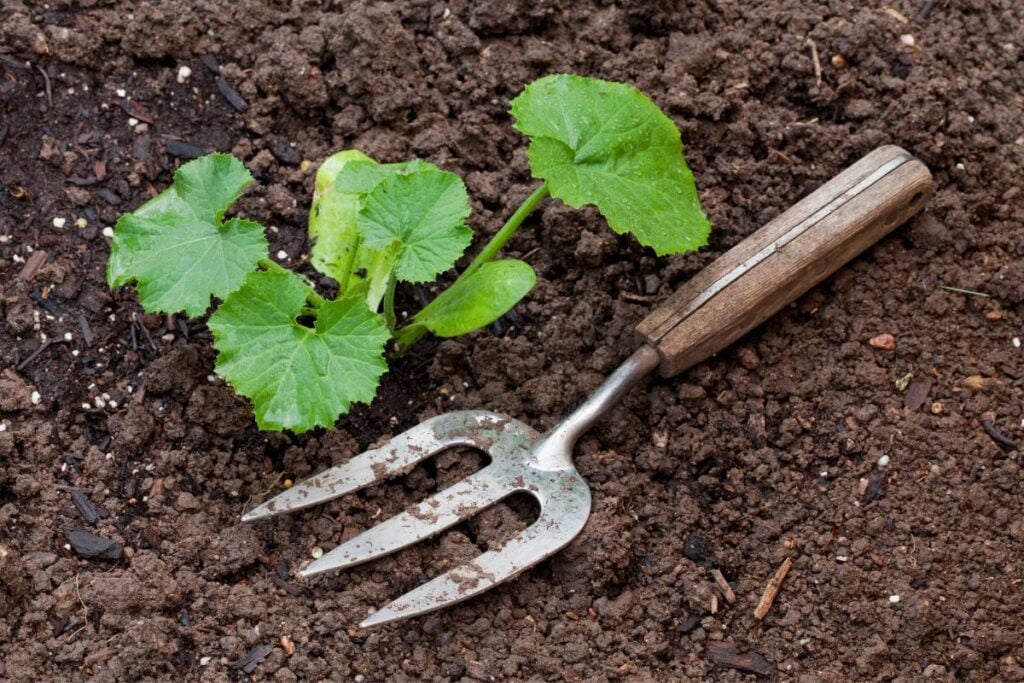
There are few soil mix recipes for Zucchinis.
Organic soil is the best where you add compost to the garden soil.
However, I have found a few perfect soil blend or soil mix recipes for Zucchinis:
Looking for gardening supplies? We have tested 100's of products before recommending them to you guys. Check out our best pick below:
| Image | Gardening Supplies | Best Price? |
|---|---|---|
 Top
Top Top
Top | Raised Garden Bed Kit | Check On Amazon |
 | XLUX Soil Moisture Meter, Plant Water Monitor, Soil Hygrometer Sensor for Gardening, Farming, Indoor and Outdoor Plants, No Batteries Required | No Results |
 Top
Top Top
Top | 82 Pcs Garden Tools Set and Extra Succulent Tools Set | Check On Amazon |
 | Joeys Garden Expandable Garden Hose with 8 Function Hose Nozzle, Lightweight Anti-Kink Flexible Garden Hoses, Extra Strength Fabric with Double Latex Core, (50 FT, Black) | No Results |
 Top
Top Top
Top | Dual Chamber Compost Tumbler | Check On Amazon |
 Top
Top Top
Top | Sunnyglade Plant Stakes | Check On Amazon |
 Top
Top Top
Top | Organic Cold Pressed Neem Seed Oil | Check On Amazon |
 Top
Top Top
Top | Mighty Mint Gallon :-Insect and Pest Control Peppermint Oil | Check On Amazon |
 Top
Top Top
Top | Scotts DiseaseEx Lawn Fungicide | Check On Amazon |
 Top
Top Top
Top | Jacks Classic 20-20-20 All Purpose Fertilizer | Check On Amazon |
 Top
Top Top
Top | 30,000 Seeds Pollinator Attracting Wildflower Mixture | Check On Amazon |
 Top
Top Top
Top | Survival Vegetable Seeds Garden Kit-Over 16,000 Seeds | Check On Amazon |
Recipe 1
It is the most basic one:
- 50% compost or well-rotted manure
- 50% garden soil
Recipe 2
- 40% sand
- 40% silt
- 20% clay
Recipe 3
- 50% compost or well-rotted manure
- 25% peat moss
- 25% perlite or vermiculite
Steps to Preparing the Soil for Zucchini Planting
Before planting the Zucchinis in your garden, you must prepare the soil.
Soil preparation is relatively easy if you are planting these veggies for the first time.
But if you have planted other plants, you might need to sanitize the soil.
You must check the soil quality and make it perfect for Zucchini growth.
Find the right location and get the soil’s pH tested.
It has to be within 6.5 and 7.0.
If you have grown any plants before and they have suffered some disease, you need to sanitize the plant or plant in a location that you have never used for planting.
For sanitation, solarization is the easiest method.
Here, you let the soil stay under the hot sun for weeks.
Cover the soil with black plastic during the hottest time of the day.
It will kill maximum pathogens.
After that, you need to prepare the soil:
- Dig the top few inches of the garden soil, around 25 to 30 cm deep, and till the soil.
- Remove all the weeds, old plant leftovers, roots, and leaves.
- Break the soil lumps and keep tilling the soil until the quality improves.
- Next, add around 8 kgs of compost to the soil and mix them well.
- After that, add some handfuls of fertilizer, like chicken manure pellets. You can also add general-purpose fertilizer or organic fertilizer.
- Mix everything well, plant the Zucchinis 1 inch deep, and space them 10-12 inches apart. The type of Zucchini will determine the spacing. Bush zucchinis can be planted 18 inches apart, whereas large varieties need 24 to 36 inches of space.
- Water the plant well and keep the soil consistently moist.
- Start fertilizing after a few weeks.
At times, the ground condition is unsuitable for Zucchinis.
In that case, you can grow them in raised beds.
Preparing the soil in raised beds is much more entertaining than the ground. The process is the same.
If you still haven’t prepared the soil, do not worry.
Dig holes in locations where you want to plant the zucchinis.
Suppose you want them to plant 18 inches apart, and you have 5 healthy young plants. Dig holes 18 inches apart.
Dig around a 30 cm wide and deep hole, fill half of the hole with compost or manure, and then fill in the hole with the dug soil.
Now plant your Zucchinis in those holes and water them well.
Ensuring Proper Soil Drainage for Zucchini Plants
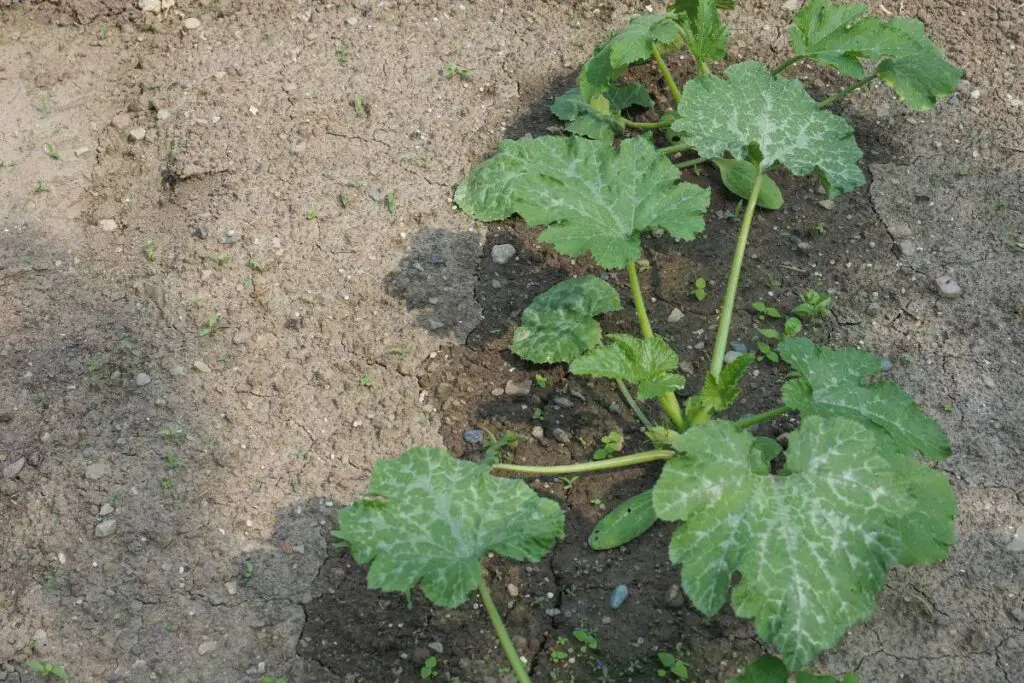
The soil in all the gardens does not remain the same.
Some will have clayey soil, and some will have soil with many stones and soil lumps.
These soil types can degrade the drainage qualities and lead to overwatering.
But don’t worry.
You can amend the soil to improve drainage and make it perfect for Zucchinis.
Below are a few strategies to improve soil drainage:
Add compost
First, check the soil quality when you dig the soil for Zucchinis.
If the soil is compact, has soil lumps, or is too sandy, you can add compost or well-rotted manure to improve the drainage.
Compost will improve the soil texture, drainage, and aeration.
With this type of soil, Zucchinis can thrive.
The roots will provide enough oxygen for breathing and space to grow and spread, making the plant well-developed and robust.
Grow in raised beds
Another way to ensure soil drainage is to grow the Zucchinis in raised beds.
The raised beds are higher off the ground and, thus, will let the excess water drain out of the bed faster.
Moreover, the raised beds receive better warmth in the spring, which can be a good start for Zucchini growth.
Aerate the soil
The soil can become compact over time and hinder drainage and root growth.
To improve aeration in the soil, you can break and aerate the soil with a fork.
It will improve air circulation and break the compactness.
When you water the plant, it will slowly reach the roots and hydrate them.
Also, with well-aerated soil, the chances of root growth are much better.
Maintaining Adequate Moisture Levels for Zucchini Plants
The best way to check proper moisture levels for Zucchinis is to check the moisture level with your finger.
Insert your finger around 1-2 inches deep into the soil.
If the top few inches feel dry, water the plant well.
Otherwise, you can skip watering the plant for a day or two.
But how do you maintain an adequate amount of moisture for the Zucchinis? Here’s how:
- Instead of maintaining a strict watering schedule, check the moisture level and water the plant.
- Water the plant deeply and infrequently. Deep watering allows the moisture to reach the roots and properly moisten all the soil around the plant. This will keep the plant hydrated for a long time. So you do not have to water them frequently and overwater them.
- Adding a layer of mulch will conserve water and keep trapping the moisture in the soil surface. This will prevent you from watering too much and keep the soil moisture in check.
- Water at the plant base. The plants will receive adequate moisture, and the roots and maintain hydration and moisture.
- Keep checking the moisture regularly.
- To maintain adequate moisture levels, use organic compost in the soil. Along with improving drainage, it can also improve water retention, thus managing the moisture level perfectly.
Soil Testing for Zucchini Plant Health
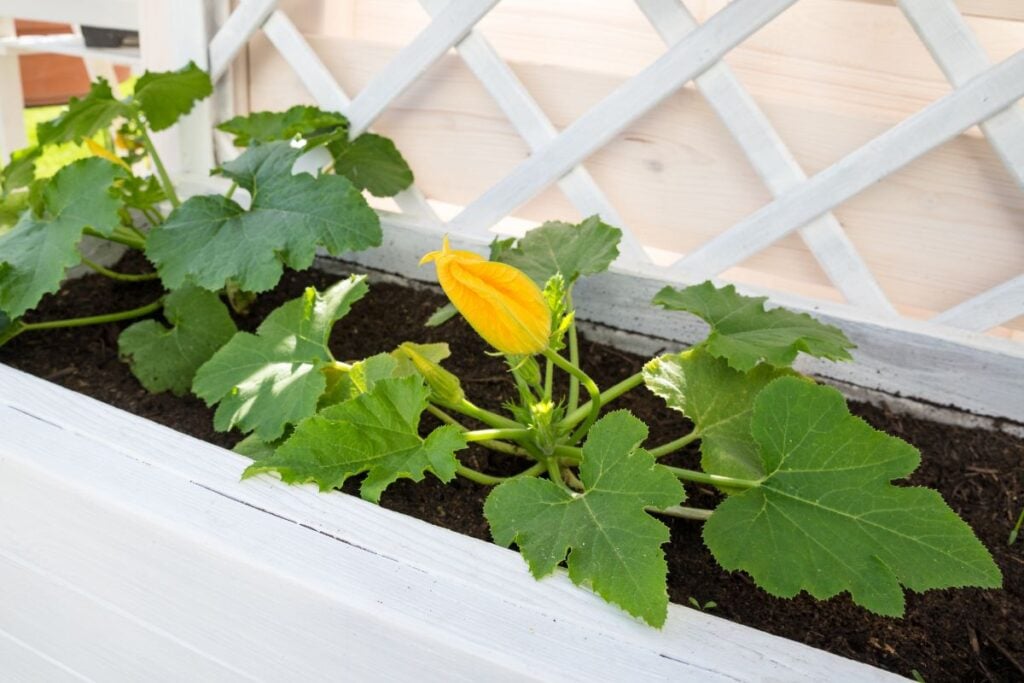
Testing and analyzing the soil for Zucchinis before planting is of utmost importance.
Testing ensures that your plant grows healthy and strong.
A soil test and analysis can tell you about the nutrient levels, pH levels, drainage and retention qualities, and the presence of any harmful contaminants.
Nutrient levels
Zucchinis do not require nutrient-rich soil, but the soil must have a perfect mix of major nutrients like nitrogen, potassium, and phosphorus.
Testing and analyzing the soil will let you know your soil’s nutrient levels.
Knowing the nutrients in the soil will allow you to know whether the soil has the proper nutrients for adequate Zucchini growth or if it has deficiencies that need to be fixed accordingly.
pH levels
As you know, the correct pH levels for Zucchinis range between 6.5 and 7.0.
By testing the soil, you can understand the pH levels and fix it according to the plants’ requirements.
Drainage and retention
Soil test and analysis also allows you to understand the drainage and retention qualities of the soil.
However, the solution for this is simple. Adding organic compost works for both.
Toxicity
Too much nutrients in the soil become toxic for the Zucchini plants.
For example, excessive salts in the soil can interrupt the plant’s water absorption abilities and even damage and weaken the roots.
Now, from where do these salts come from? If you use too much fertilizers, their salt accumulates over the soil surface.
These salts can further hinder the plant’s growth and development.
Testing and analyzing the soil will inform you about the toxicity so you can take suitable steps to fix it.
Also read:
Final Thoughts
The best type of soil for Zucchinis is loamy soil which has a perfect blend of soil, clay, and organic matter. Adding compost can improve the quality if the soil is sandy or clayey. Ensure the soil has the proper pH levels, permeability, and good drainage and retention qualities.
While both organic and inorganic soil is ideal, organic is considered the best choice. Preparing the soil is very easy. Dig a few inches of the soil, add compost and fertilizer, and plant your plant. If you haven’t prepared, don’t worry. Dig a deep hole, add compost, mix it with the soil, and plant your Zucchinis.
Before planting, test and analyze the soil. Send your soil sample to a laboratory for a soil test. Once you know the results, you will understand the soil’s condition and decide whether it is ideal for the Zucchinis.
Can I use regular potting soil for potted Zucchinis?
You can use it without any doubt. But you must be mindful of the soil type. It should have the proper nutrients and pH levels, be well-drained, and contain enough organic matter to retain moisture.
Can I reuse the soil from last year’s Zucchinis?
While you can use it, it is better to avoid it, especially if your plants have suffered from diseases. Experts suggest crop rotation to prevent diseases from transferring into the new plants. So, new soil or sanitized soil is the best option.
Reference: Zucchini Wikipedia
